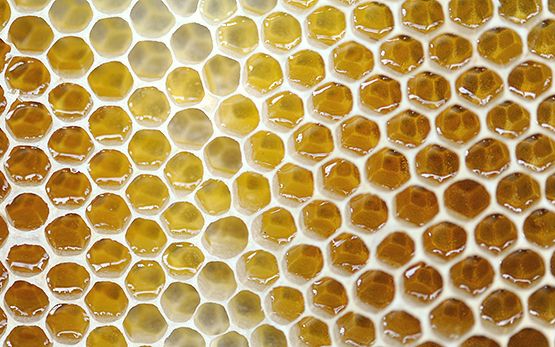1. Background: The present dataset was produced in the scope of the NCCS Impacts programme and were explored in the study described by Martins and Calanca (2025). We analyzed how future climatic conditions affect crop yields in the four main cropland regions in Switzerland: Eastern Jura, Western Plateau, Central Plateau, and Northeastern Plateau. The definition of these four regions was based on Schüepp and Gensler (1980) and WSL (2023) and reflects to the one adopted by NCCS for discussing the regional implications of climate change. 2. Climate scenarios: Weather data used for the simulations were extracted from the repository of the climate scenarios for Switzerland (CH2018 Project Team, 2018). The so-called CH2018 climate scenarios were originally derived from the EURO-CORDEX projections, which were performed using a combination of global and regional climate models (EURO-CORDEX, 2024). Local data were produced using a 30-year reference period (1981-2010) for bias correction and a quantile-mapping approach for downscaling (CH2018 Project Team, 2018). For each of the four study areas, a representative weather station was chosen: Basel-Binningen station for Eastern Jura, Payerne for Western Plateau, Bern-Zollikofen for Central Plateau, and Zürich-Kloten for Northeastern Plateau. To cover the lower and upper end of possible future climate developments, scenarios corresponding to two emission pathways were chosen, the Representative Concentration Pathway 8.5 (RCP 8.5) and 2.6 (RCP 2.6). Corresponding atmospheric CO2 levels were obtained from Meinshausen et al. (2011). For each RCP, we included 12 climate model chains. 3. Modeling approach: The crop yields were simulated using the process-based model DayCent, version DD17centEVI (Hartman et al., 2019). In DayCent, the plant productivity is primarily a function of the daily solar radiation, genetic maximum potential given by a crop specific radiation use efficiency, and scalars quantifying the effects of air temperature, soil water content, nutritional status, shading by vegetation, phenological stage, and atmospheric CO2 level on growth. For simulations, a standardized management scheme was applied, adopting a 9-year crop rotation defined based on information from long-term field experiments conducted in Switzerland and neighboring countries (cf., Martins et al., 2022). The rotation included: grass-clover ley (2 years), grain maize, sugar beet, winter wheat, rapeseed, winter barley, soybean and potatoes. Because of the year-to-year variability in weather conditions, nine repetitions of the basic rotation with a sequential one-year shift of the crop sequence were included in the simulations to allow for varying interactions between crops and weather in different years. Two time slices were selected to study changes in average crop yields and interannual yield variability: (i) 1981-2010 as the reference period and (ii) 2045-2074 as the mid-century period. We performed simulations assuming both elevated CO2 (eCO2) and current CO2 levels (cCO2). Individual simulations were run for each of the nine repetitions of the basic crop rotation, each region, each RCP and each climate model chain. 4. Outputs and units: This dataset provides access to the modeled yields. Results are expressed as megagrams of dry matter (DM) per hectare (Mg DM ha-1). References: CH2018 Project Team, 2018. CH2018 – Climate scenarios for Switzerland, National Centre for Climate Services, NCCS [dataset]. EURO-CORDEX, 2024. EURO-CORDEX - Coordinated Downscaling Experiment - European Domain. https://www.euro-cordex.net (accessed 06 November 2024). Hartman, M.D., Parton, W.J., Grosso, S.J.D., M. Easter, Hendryx, J., Hilinski, T., Kelly, R., Keough, C.A., Killian, K., Lutz, S., Marx, E., McKewon, R., Ogle, S., Ojima, D.S., Paustian, K., Swan, A., Williams, S., 2019. DayCent Ecosystem Model. The Daily Century Ecosystem, Soil organic Matter, Nutrient Cycling, Nitrogen Trace Gas, and Methane Model. User Manual, Scientific Basis, and Technical Documentation. Colorado State University, Fort Collins, USA. Martins, M.R., Necpalova, M., Ammann, C., Buchmann, N., Calanca, P., Flechard, C.R., Hartman, M.D., Krauss, M., Le Roy, P., Mäder, P., Maier, R., Morvan, T., Nicolardot, B., Skinner, C., Six, J., Keel, S.G., 2022. Modeling N2O emissions of complex cropland management in Western Europe using DayCent: Performance and scope for improvement. Eur. J. Agron. 141, 126613. doi :10.1016/j.eja.2022.126613. Martins, M.R., Calanca, P., 2025. Model projections indicate substantial decrease in yield stability for summer crops in Switzerland, but less so for winter crops. Eur. J. Agron. 181, 127855. doi:10.1016/j.eja.2025.127855. Meinshausen, M., Smith, S.J., Calvin, K., Daniel, J.S., Kainuma, M.L.T., Lamarque, J.F., Matsumoto, K., Montzka, S.A., Raper, S.C.B., Riahi, K., Thomson, A., Velders, G.J.M., van Vuuren, D.P.P., 2011. The RCP greenhouse gas concentrations and their extensions from 1765 to 2300. Clim. Change 109, 213. https://doi.org/10.1007/s10584-011-0156-z. Schüepp, M., Gensler, G., 1980. Klimaregionen der Schweiz (Climate regions of Switzerland), in: Müller, G. (Ed.) Die Beobachtungsnetze der Schweizerischen Meteorologischen Anstalt (The observation networks of the Swiss Meteorological Service). Arbeitsberichte der Schweizerischen Meteorologischen Anstalt, Nr. 93 (Work reports of the Swiss Meteorological Institute No. 93). Swiss Meteorological Institute, Zürich, Switzerland. https://www.meteoschweiz.admin.ch/service-und-publikationen/publikationen/berichte-und-bulletins/1980/die-beobachtungsnetze-der-schweizerischen-meteorologischen-ansta.html (accessed 15.10.2024). WSL, 2023. NFI knowledge about the Swiss forest. Swiss Federal Institute for Forest, Snow and Landscape Research. https://www.lfi.ch/index-en.php (accessed 10 September 2024).











